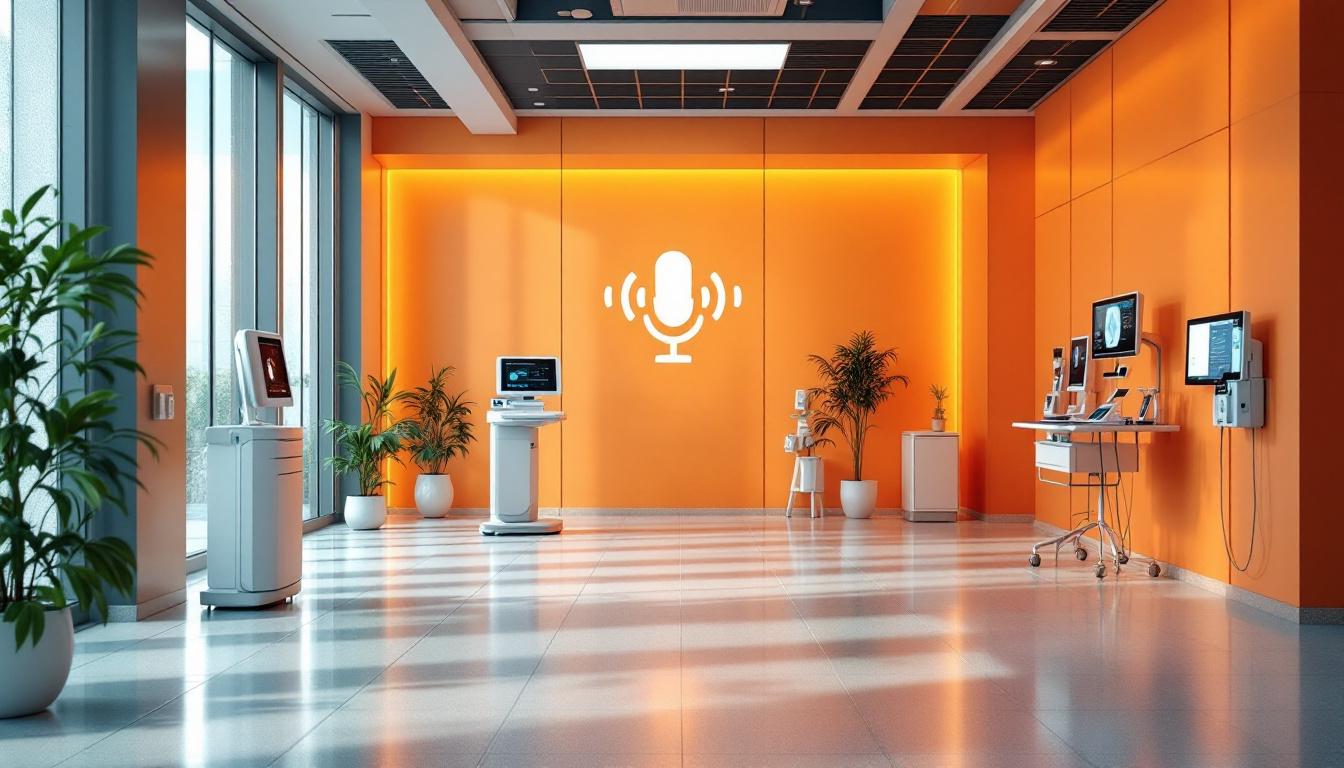Using Virtual Reality for Medical Training and Marketing
Transforming Healthcare through Immersive Virtual Reality Solutions
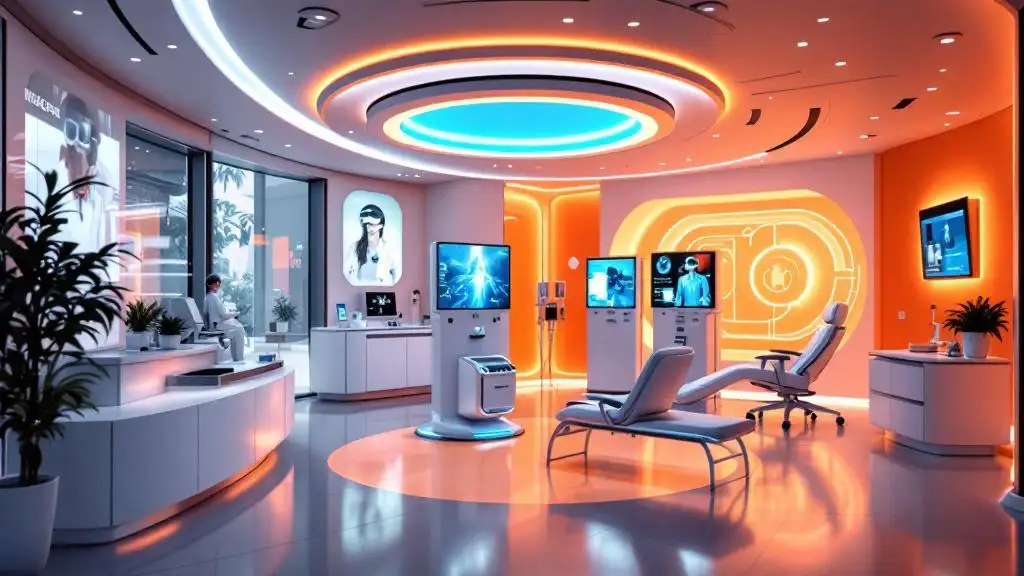

Using Virtual Reality for Medical Training and Marketing
Revolutionizing Medical Education and Patient Engagement
Virtual reality (VR) is rapidly becoming a pivotal technology in healthcare, transforming both medical training and provider-patient interactions. Its immersive capabilities enable safe, cost-effective, and highly interactive experiences, providing a new dimension in medical education, marketing, and patient care. This article explores how VR is reshaping healthcare practices, with insights from industry leaders, real-world case studies, and future industry trends.
Benefits of Virtual Reality in Medical Training
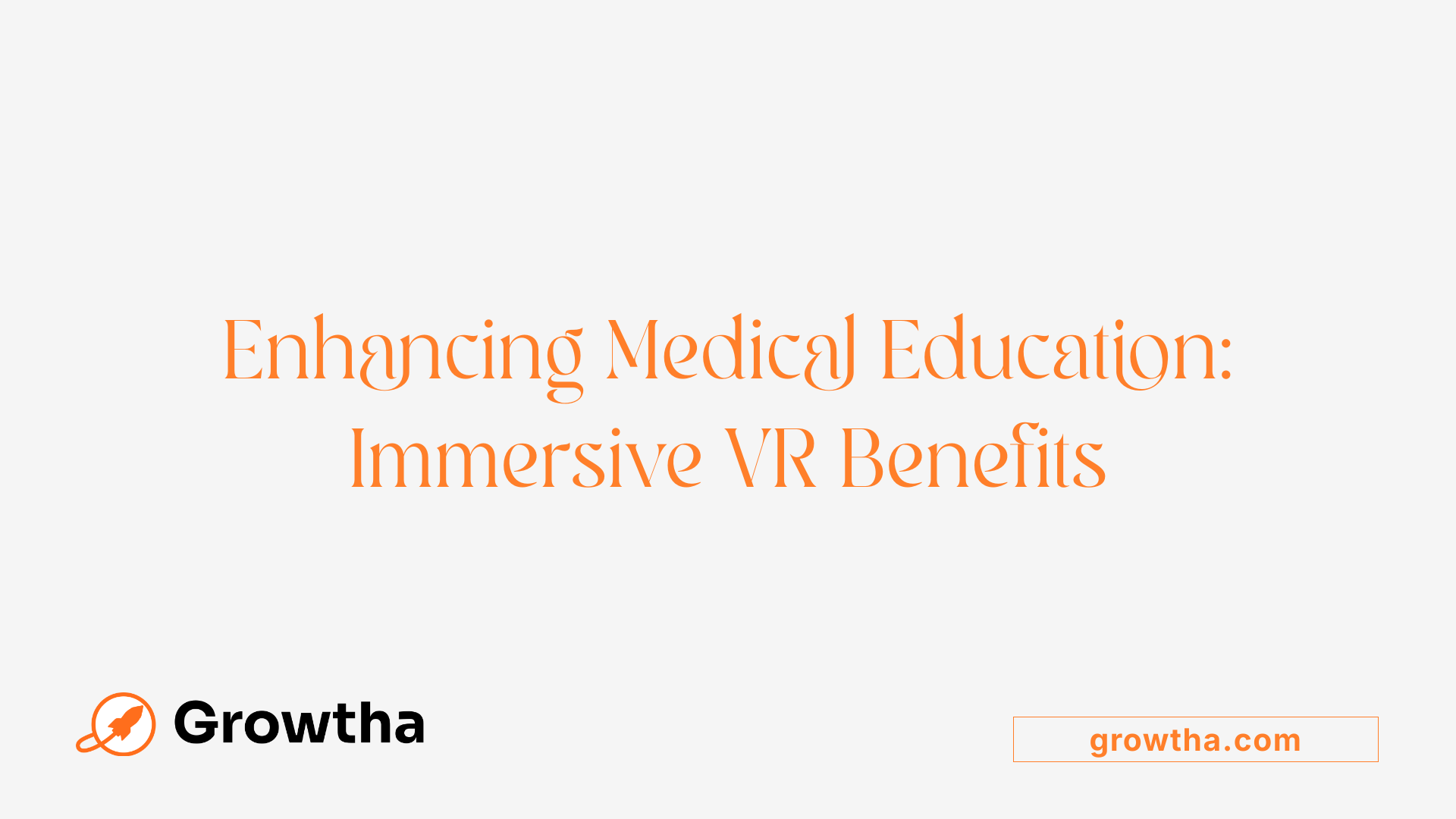
What are the benefits of using virtual reality for medical training?
Virtual reality (VR) has transformed medical education by offering immersive, lifelike simulations that enhance learners' skills and decision-making abilities. These realistic environments enable medical professionals to practice complex procedures, analyze medical devices, and rehearse emergency scenarios in a safe, risk-free setting.
VR facilitates standardized, repeatable training sessions that ensure consistent learning experiences. This consistency allows students and practitioners to master techniques through repeated practice, improving confidence and competence.
Moreover, VR is highly cost-effective and accessible. It reduces the need for physical equipment, travel, and in-person training sessions, making quality education available globally, even in remote or resource-limited areas. Medical institutions increasingly adopt VR modules for training in specialties such as surgery, radiology, and emergency medicine, which often require costly or scarce resources.
In addition to technical skills, VR supports the development of soft skills such as empathy and communication. Simulations can mimic patient interactions, helping healthcare providers enhance bedside manner and cultural competence.
Studies consistently show that VR training improves clinical skills, accuracy, and knowledge retention. It prepares practitioners better for real-life situations, ultimately leading to better patient outcomes. The ability to practice repeatedly, assess performance objectively, and simulate rare cases makes VR a valuable complement to traditional training methods.
Technological Solutions and Hardware in VR Medical Training
What are some technological solutions and hardware used in VR medical training?
VR medical training employs a variety of advanced hardware and software to create realistic, interactive educational experiences. Key hardware includes headsets like DPVR, Oculus Quest, and HTC Vive. These devices provide immersive 3D environments that allow practitioners to practice on virtual patients or medical devices.
Peripherals such as motion controllers and haptic feedback devices further enhance interaction. They enable users to manipulate virtual objects, perform surgical gestures, or feel tactile sensations, increasing the realism of training scenarios.
Several simulation platforms are popular in the field. For example, Osso VR and Harvard Medtech offer comprehensive training modules for surgical procedures, emergency response, and team simulation. These platforms often include features like real-time analytics, customized scenarios, and performance feedback.
VR engines such as Unreal Engine and Unity are the backbone of these applications. They facilitate the development of detailed 3D visualizations, interactive elements, and complex simulations.
Supporting these solutions are cloud services like AWS, Azure, and Google Cloud, which manage data storage, enable remote access, and facilitate collaborative training across multiple locations.
Altogether, these technological solutions and hardware components significantly improve the quality, safety, and accessibility of medical training. They prepare healthcare professionals for real-world challenges while reducing risks and costs associated with traditional training methods.
Application of VR in Medical Training
How is virtual reality used in medical training?
Virtual reality has become an essential part of modern medical education, providing immersive, interactive environments for practice and learning. It allows students and healthcare professionals to simulate complex medical procedures without risk to real patients.
In surgical practice, VR platforms such as Oxford Medical Simulation, Level Ex, and PrecisionOS enable users to perform procedures like laparoscopic surgery, orthopedic operations, and emergency interventions in realistic settings. These simulations help improve technical skills, accuracy, and confidence through repeated practice.
VR also plays a significant role in anatomy exploration. Educational programs at institutions like Harvard Medical School utilize VR to visualize 3D models of human anatomy, helping learners understand spatial relationships and structural details more effectively than traditional textbooks.
Emergency management training benefits from VR scenarios that mimic critical situations such as cardiac arrest or trauma responses. Responders can rehearse protocols in a controlled environment, improving response times and decision-making.
Remote learning and telemedicine are further enhanced through VR, allowing healthcare providers to upskill from any location. Virtual platforms enable real-time collaborations and training sessions, making medical education more accessible and scalable.
Beyond technical skills, VR is increasingly used for soft skills training, including communication, bedside manner, and empathy. Simulations can portray patient interactions, helping clinicians develop compassion and improve patient experience.
By integrating these diverse applications, VR advances healthcare education, making it safer, more engaging, and widely available.
Additional insights
| Application Area | Examples | Benefits |
|---|---|---|
| Surgical Practice | Orthopedic, neurosurgery, cardiology | Enhanced skills, safety, repeatability |
| Anatomy Exploration | Visualization of organs and systems | Better understanding, spatial awareness |
| Emergency Management | Cardiac arrest, trauma scenarios | Improved response, decision-making |
| Remote Learning | Virtual classrooms, collaborative cases | Accessibility, scalability |
| Soft Skills | Communication, empathy training | Better patient interaction, confidence |
VR in healthcare training is transforming traditional methods, ensuring practitioners are better prepared for real-world challenges while maintaining safety and efficiency.
Impact of VR on Healthcare Practices and Soft Skills Development
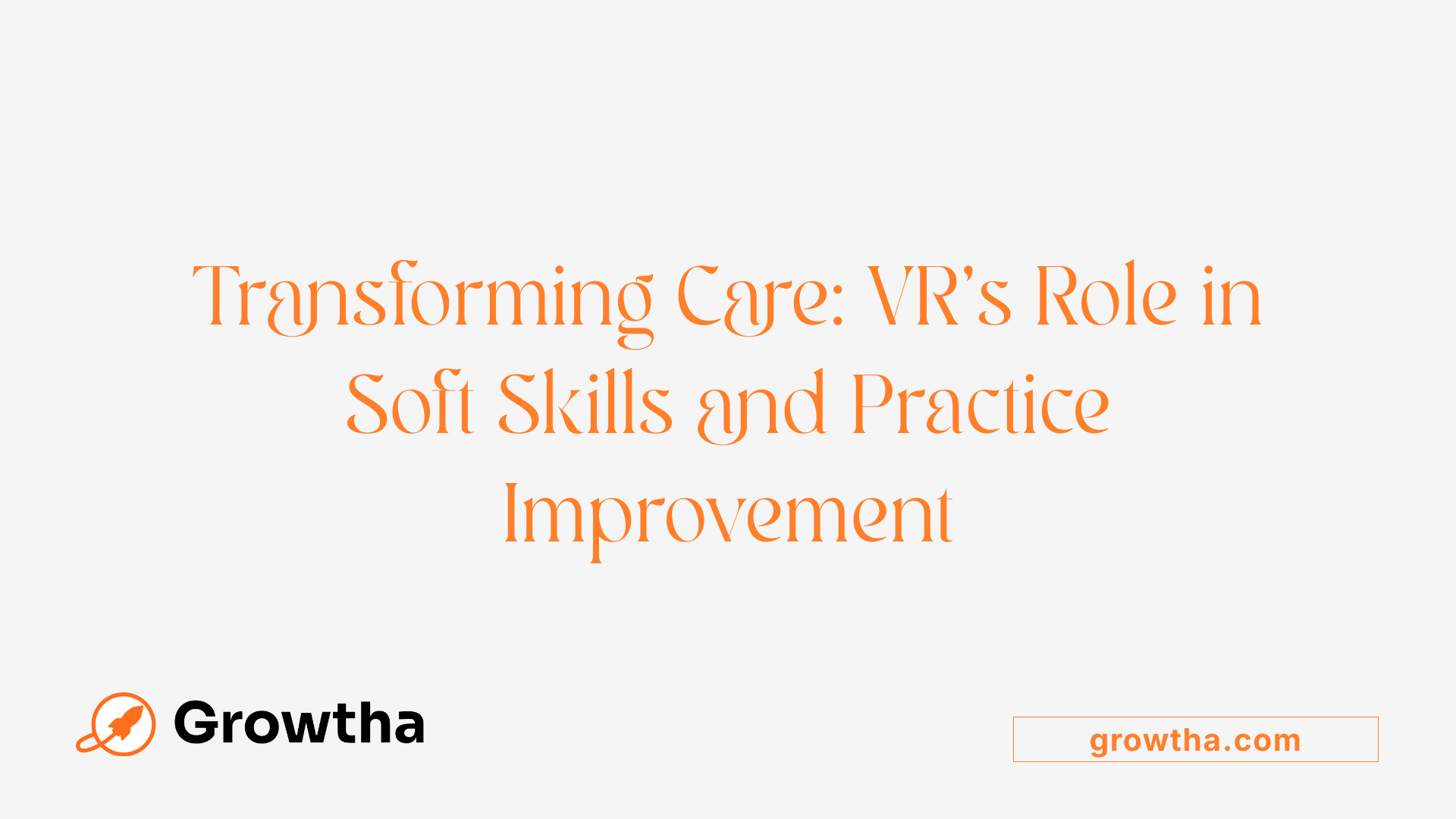
How can virtual reality improve healthcare practices and soft skills development?
Virtual reality enhances healthcare education by creating immersive scenarios where practitioners can refine their communication, decision-making, and emotional skills. It allows for realistic simulations of patient-provider interactions, enabling learners to practice delivering difficult news, managing patient emotions, and coordinating with team members in a risk-free setting.
One notable application is the simulation of patient interactions, including explaining diagnoses or treatment plans, which helps improve clarity and empathy. For example, VR environments can mimic complex emotional reactions from patients or family members, allowing providers to rehearse sensitive conversations.
VR also supports interprofessional training by bringing together various healthcare roles to collaborate on simulated cases. This fosters better teamwork, understanding of each other's roles, and emotional competence. Such practice helps reduce errors, improve patient safety, and increase confidence.
Research indicates that VR-based soft skills training results in higher retention of communication strategies and greater empathy. Platforms like virtual standardized patients and AI-enhanced scenarios facilitate personalized learning, adjusting difficulty based on participant responses.
Ultimately, VR provides a versatile, engaging platform that complements traditional education. It makes experiential learning accessible remotely while improving both technical and interpersonal medical skills.
Effectiveness of VR in Healthcare Training

How effective is VR in improving healthcare practices and soft skills development?
Virtual reality (VR) has proven to be a highly effective tool in advancing medical education and practice. Research studies and meta-analyses consistently show that VR enhances both technical skills and soft skills crucial for healthcare professionals. It helps learners perform complex procedures with greater accuracy, reduces errors, and improves decision-making capabilities.
In addition to technical proficiency, VR significantly boosts soft skills like empathy, communication, and the ability to deliver difficult news. These skills are vital for patient care and interprofessional collaboration. Many studies report increased learner satisfaction, confidence, and engagement when using VR compared to traditional training methods.
VR provides a risk-free, standardized environment where practitioners can repeatedly practice high-stakes scenarios, from surgeries to emergency response, without risking patient safety. It fosters critical thinking and teamwork, leading to better patient outcomes. Although some research highlights limitations such as study bias and variability in VR implementations, the overall evidence supports VR’s role in improving healthcare practices and soft skills development.
Comparison with traditional methods
Compared to conventional training—such as cadaver labs, bedside teaching, and lectures—VR offers immersive, realistic experiences that are accessible anytime and anywhere. It reduces training costs, eliminates logistical hurdles, and allows learners to practice rare or complex cases repeatedly.
Learner satisfaction and confidence
Feedback from users indicates high levels of satisfaction and increased confidence post-training. Trainees often report feeling more prepared and capable after VR sessions, translating into better performance in clinical settings.
Performance and accuracy improvements
Quantitative studies reveal that VR-trained practitioners demonstrate superior procedural accuracy and faster skill acquisition. For example, VR-based surgical training has shown to improve precision and reduce operative errors.
Limitations and challenges
Despite these benefits, VR faces challenges like high initial costs, technological limitations in simulating tactile feedback, and the need for continuous content updates. As technology advances, these barriers are gradually diminishing, promising even more effective applications in healthcare.
| Aspect | Traditional Methods | VR-Based Training | Additional Notes |
|---|---|---|---|
| Cost | Moderate to high | Initially high, but decreasing | Long-term savings in travel and equipment |
| Flexibility | Fixed schedules | On-demand, flexible | Scalability across locations |
| Engagement | Passive learning | Active participation | Higher retention and motivation |
| Skill Retention | Variable | Improved with repeated practice | Multi-sensory engagement |
| Limitations | Limited simulation scenarios | Physical tactile feedback challenges | Continued innovation needed |
This evolving landscape positions VR as a transformative component in healthcare education, blending technological innovation with improved patient care outcomes.
Case Studies and Real-World Applications of VR in Healthcare Training
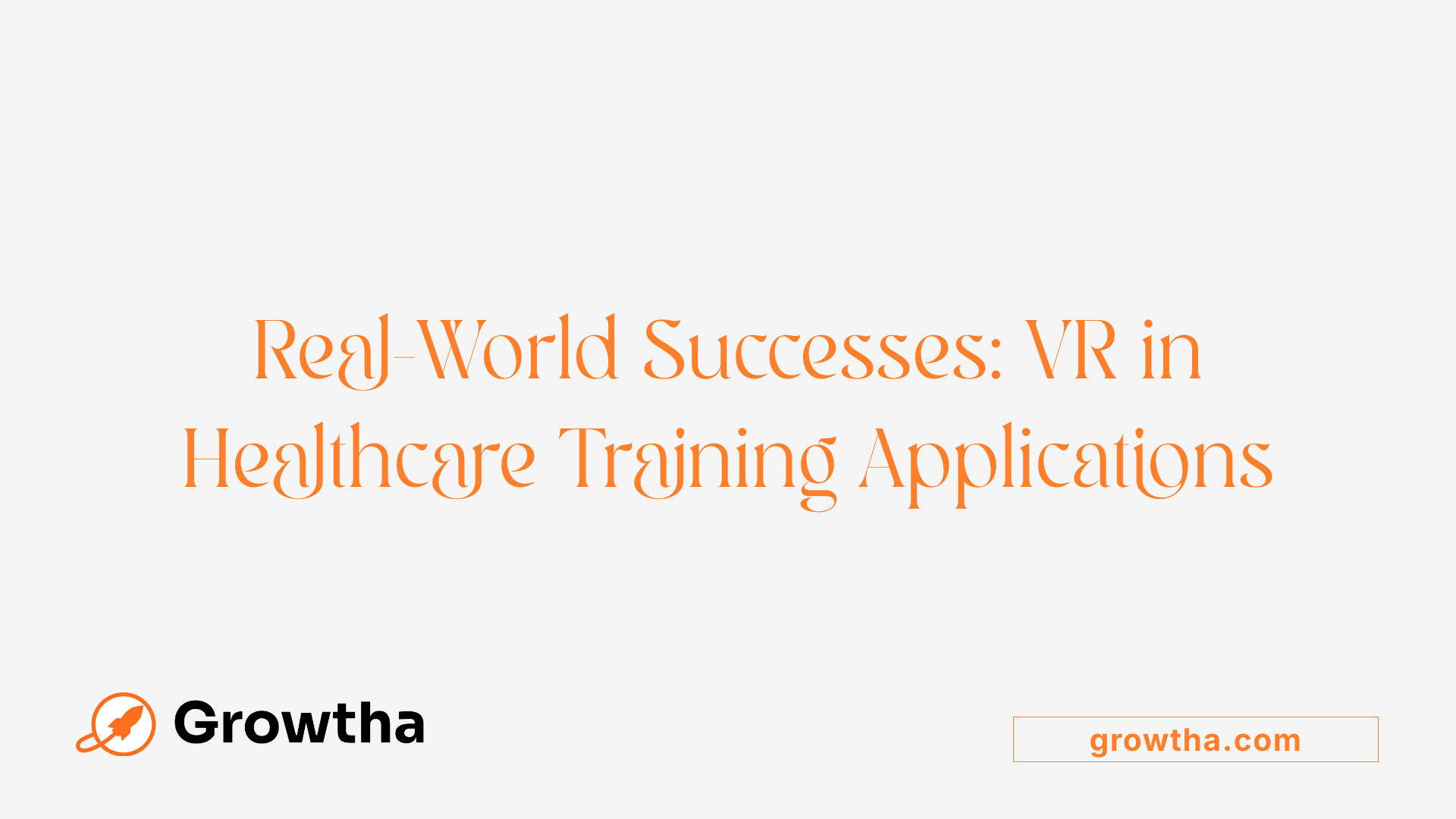
Are there any case studies or real-world examples of VR in healthcare training?
Yes, numerous case studies and real-world applications illustrate how VR is transforming healthcare training. One notable example is Pfizer, which used mixed reality (MR) to create virtual replicas of pharmaceutical production lines. This innovative approach reduced training time by over 40%, helping staff learn complex manufacturing processes efficiently.
The Centre for Healthcare Innovation in Singapore incorporated VR and MR into their training systems. This integration enhanced employee knowledge, improved safety practices, and fostered a deeper understanding of procedures in a risk-free environment.
In the United States, Purdue Global employed Meta Quest-based VR training to boost nursing students’ confidence and clinical readiness. As a result, their nursing exam pass rates increased by 10-15%, demonstrating improved learning outcomes and preparedness.
Several specialized platforms like Motive.io, Medicalholodeck, and Oculus are extensively used for hands-on training in various areas. These include PPE procedures, surgical planning, orthopedic surgeries, and emergency response drills. The immersive nature of VR allows practitioners to rehearse complex scenarios repeatedly, leading to faster skill acquisition and enhanced safety.
Overall, these examples reflect VR’s expanding role in medical education, emphasizing safer, more effective, and scalable training solutions. As technology continues to advance, VR is poised to further improve healthcare staff training, reduce errors, and ultimately benefit patient outcomes.
Market Outlook and Industry Trends in VR Healthcare
What is the market outlook for VR in healthcare training and marketing?
The future of virtual reality in healthcare looks very promising, with rapid growth expected over the next decade. The market size is projected to jump from USD 3.12 billion in 2023 to an impressive USD 38.46 billion by 2032, reflecting a compound annual growth rate (CAGR) of approximately 35.1%. This expansion is driven by technological innovations that make VR both more realistic and accessible.
VR’s role in medical training is becoming more prominent, offering immersive simulations for surgical procedures, emergency scenarios, and anatomy education. It also revolutionizes healthcare marketing by enabling interactive demonstrations of medical devices and conditions, improving patient understanding and engagement.
Industry leaders such as Johnson & Johnson, Oculus, and medical institutions like Harvard and Johns Hopkins are leveraging VR in their training and marketing efforts. Regions like North America lead the way due to substantial investments, research support, and early adoption. Meanwhile, the Asia-Pacific region is expected to experience the fastest growth, propelled by expanding healthcare infrastructure and technological adoption.
Despite the optimistic outlook, challenges remain. High costs of setup and technological hurdles, including the need for more tactile feedback simulations, are barriers to widespread adoption. However, ongoing advancements in hardware, AI integration, and telehealth platforms are expected to overcome these obstacles.
Overall, VR is set to become an essential part of healthcare education and patient engagement, improving outcomes, lowering costs, and transforming how medical professionals learn and market their services.
Future Trends and Industry Insights in VR Healthcare
What are the future trends and industry insights related to VR in medical education and marketing?
The future of virtual reality (VR) in healthcare looks promising, with substantial growth expected in both medical education and marketing sectors. Advancements in technology such as standalone headsets, artificial intelligence (AI), and cloud computing are set to make VR experiences more realistic, personalized, and accessible. These innovations allow healthcare providers and students to engage in detailed simulations tailored to individual learning needs, significantly enhancing skill acquisition and knowledge retention.
Industry experts predict increased investment in VR platforms, which will help reduce costs and expand availability worldwide. Open platforms for content creation are also emerging, enabling educational institutions and companies to develop and share VR modules more easily. This democratization of content fosters innovation and accelerates adoption across diverse healthcare specialties.
Regulatory and ethical considerations will play a vital role in shaping VR's future. As the technology becomes more integrated into clinical practice and patient education, policies around patient privacy, data security, and professional standards will need regular updates. Ethical guidelines will ensure responsible use, especially when VR applications involve sensitive information or simulate real-life scenarios.
Environmental impact is another aspect gaining attention. The energy consumption of VR hardware and supporting infrastructure will need sustainable solutions, especially amid a global push for eco-friendly practices.
COVID-19 pandemic-driven shifts to remote learning have accelerated the use of VR, and this trend is expected to continue. Virtual training and patient engagement will become more commonplace, offering safe, cost-effective, and engaging ways to learn and communicate.
Overall, industry insights point toward a future where VR creates immersive, safe, and collaborative environments for medical training, ongoing professional development, and patient interaction. These developments will support higher standards of care, more effective education, and innovative marketing practices—making VR an indispensable tool in modern healthcare.
Conclusion: The Promising Future of VR in Healthcare

What is the future outlook for VR in healthcare training and marketing?
The outlook for virtual reality in healthcare is extremely positive. As the technology continues to advance, VR is expected to become a standard tool in both medical training and patient engagement.
Currently, VR is already enhancing the way healthcare professionals learn complex procedures, improve soft skills like empathy, and understand anatomy through immersive 3D visualizations. It’s also transforming medical marketing by offering interactive product demos that help clients better grasp device functionalities and benefits.
Looking ahead, innovations such as artificial intelligence (AI) integration, better hardware for more realistic simulations, and remote capabilities with telemedicine will expand VR’s role. These advancements will make training more personalized, accessible, and cost-effective.
While high initial costs and technical barriers remain, decreasing expenses and increased adoption are expected to encourage broader use. Regulatory frameworks and ethical standards will guide responsible implementation, ensuring VR’s growth benefits all stakeholders.
Overall, VR is poised to become a vital part of healthcare—improving education, clinical procedures, and marketing efforts—leading to safer, more effective, and tailored healthcare services worldwide.
Empowering Healthcare with Next-Generation Technologies
As the healthcare industry continues to evolve, virtual reality stands at the forefront of innovation, offering transformative solutions for medical training, patient education, and marketing. Its ability to create safe, engaging, and highly personalized experiences enhances clinical skills, soft skills, and patient understanding. With ongoing advancements in AI, cloud computing, and hardware technology, VR’s role is expected to expand further, integrating seamlessly with telemedicine and personalized care platforms. Despite some challenges, industry experts are optimistic about VR’s potential to improve healthcare outcomes, reduce costs, and foster a more compassionate, informed, and efficient healthcare environment. Embracing responsible and ethical adoption, the future of VR in healthcare is bright, promising a new era of immersive, accessible, and impactful medical practice and education.
References
- VR Training | Virtual Reality Medical Training Solutions
- Virtual Reality in Medical Training and Education | Vention
- The Applications of Virtual Reality Technology in Medical Groups ...
- A Guide to Applying Virtual Reality in Medical Training
- Accelerating healthcare training with VR | Strivr Blog
- How VR in Medical Training Transforms Patient Treatment - Sermo
- Virtual Reality (VR) for Medical Training in 2025 - ScienceSoft



